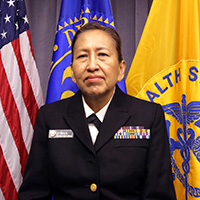We all look forward to summer and spending time outdoors. We want everyone to enjoy the season fun with safety in mind. Although there are many safety messages for summer safety, we want to emphasize some of the major dangers to observe to help ensure a safe and happy summer.
Children and Hot Vehicles
Every 10 days in the U.S., a child dies from being left in a hot car. It takes only a few minutes for a car to heat up and become deadly to a child inside. A reported 53 percent of child heatstroke deaths occur when a caregiver has forgotten a child in the car. Prevent heatstroke by creating reminders in your view such as placing an item such as purse or hat in the back seat. This will allow you check the back seat to retrieve the item before leaving the vehicle. If you see a child alone in a car, call 911. Read more information on preventing heatstroke .
Child Safety Seats or Devices for Ages 0 to 12
Road injuries are the leading cause of unintentional deaths to children in the U.S. Correctly used child safety seats can reduce the risk of death by 71 percent. A safe ride every time includes correct use of child safety seats. Child safety seat laws vary by State and tribe. Check with your local state or tribe for child passenger policy. More information on child safety seats .
Seat Belts
Nationwide seat belt use is at 84 percent as reported by the National Highway Traffic Safety Administration. However, seat belt use in American Indian/Alaska Native (AI/AN) communities varies from 20-70 percent. Motor vehicle crashes are the leading cause of unintentional injury for AI/AN ages 1 to 44. Seat belts reduce the risk of fatal injury to front-seat passenger car occupants by 45 percent. Seat belts have saved thousands of lives over the decades. Please ensure everyone is buckled up for every ride. State and tribal seat belt laws vary. Check with your local state or tribe regarding seat belt policy. More information on seat belt use .
Drowning Prevention
Summertime fun involves swimming in pools or at the beach. Drowning is a leading cause of injury for children ages 1 to 14 and three children die every day as a result of drowning. Swimming safety and boating safety involves parental or guardian close supervision for small children. Always use life jackets in open water and secured fencing around backyard swimming pools. For more information on swimming and boating safety .
Sun Exposure
Anyone Can Get Skin Cancer. Even people who don't burn are at risk for skin cancer. It doesn't matter whether you consider your skin light, dark, or somewhere in between. You are at risk for skin cancer. Being in the sun can damage your skin. For more information on preventing and detecting skin cancer .
Read more about the IHS Injury Prevention Program for additional tips.
Environmental health officer recognized with IHS Safety and Health Award



